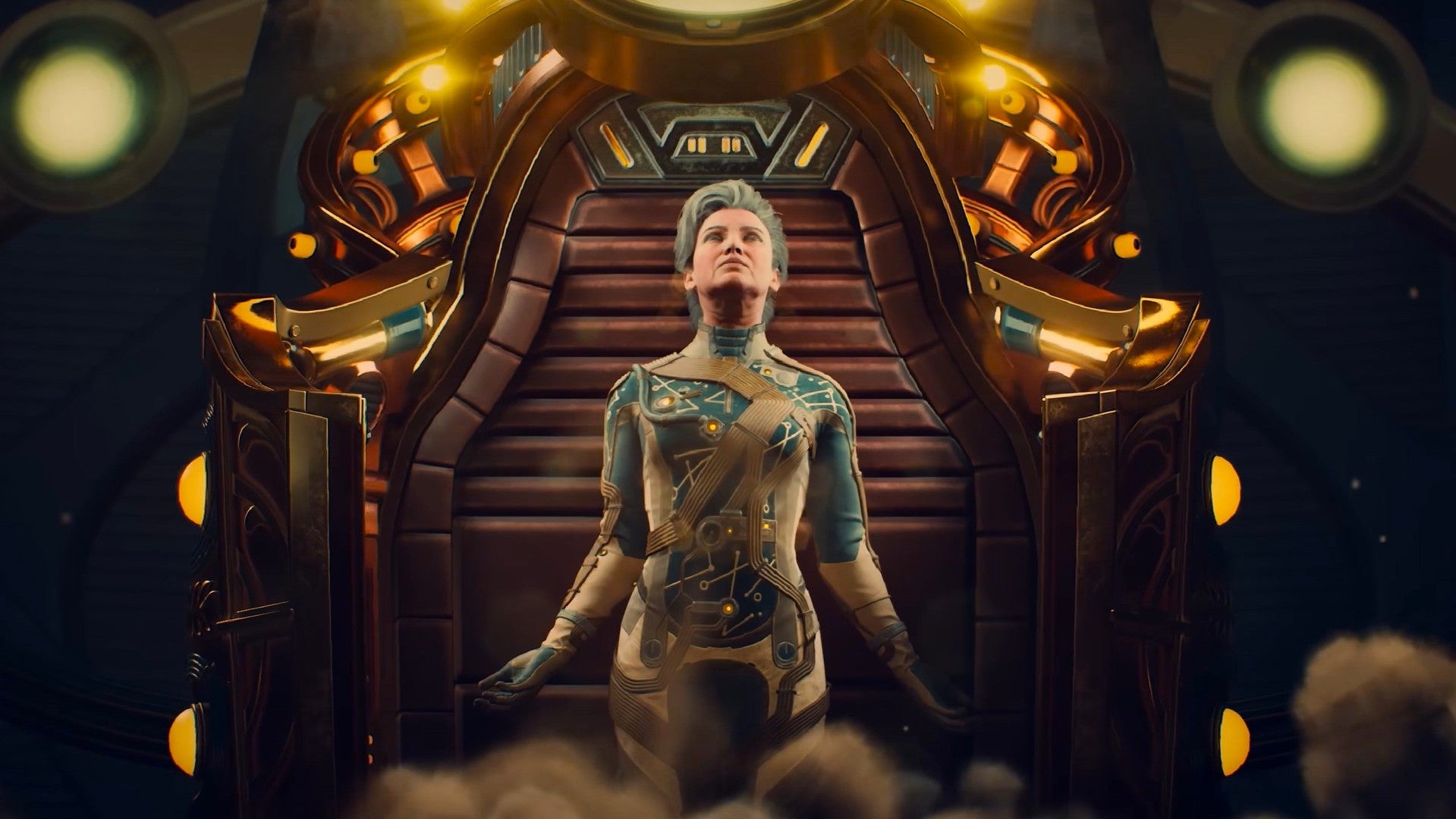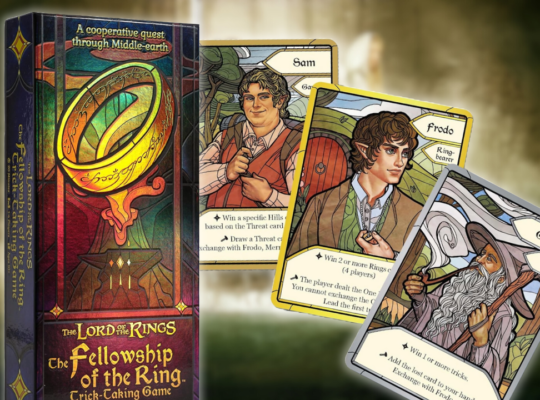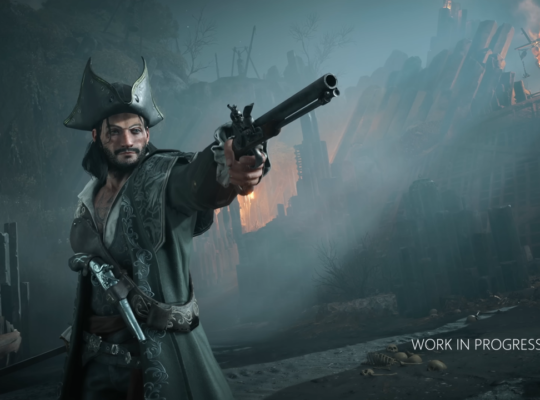
[Note: All footage is from a work-in-progress alpha build.]
Having finally seen The Outer Worlds 2 for myself, it’s clear that leaning into deeper RPG elements was one of the priorities for developer Obsidian. Where the first game was more approachable with streamlined systems and progression for building out your character, the sequel is about avoiding homogeneity, and even egging you on to play in unorthodox fashion. But it’s not entirely about being complex for the sake of it. The Outer Worlds 2 wants players to get creative, become more specialized with the things they spec into, and maybe embrace the oddball choices they may have to make.
“We’re looking for ways to incentivize the player to experiment with different builds, either traditional or non-traditional,” design director Matt Singh told me in a conversation about how the team has revamped its RPG mechanics. When speaking to the broader approach, he said “We really wanted to lean into synergies, looking at how player Skills, Traits, and Perks can all infuse into interesting builds that play off of other systems.” You could see some of these ideas at work in our exclusive 11 minutes of The Outer Worlds 2 gameplay, where the new gunplay, stealth, gadgets, and dialogue were showcased. But for this part of our IGN First for exclusive coverage on The Outer Worlds 2, we’re focusing on the nitty gritty of how all these systems have been reworked and what you can expect from them.
Rethinking the Skill System
“We would often see characters good at everything, which by the end of the game, minimized your personal experience with your character,” lead systems designer Kyle Koenig told me when reflecting on the first game and considering changes for the sequel. Part of how Obsidian is doing that is by moving away from the Skill categories that grouped your stats together in the original and going with individual Skills that have more drastic differences between them. “We wanted to focus on making each individual level-up and investment really important. There’s less confusion on when I should invest in one Skill or the other. If I want to be a player that’s all about guns and using medical devices, I know which Skills I really need to care about. By having them separated and not in groupings, it lets characters be more specialized.”
Singh added, “There’s more than just a traditional stealth-focused build, combat-focused build, or speech-focused build. There’s a lot of blending of concepts, playing with other systems and incorporating those into a pretty broad, but unique range of different player profiles.” He alluded to having certain investments in Skills manifest in other ways such as Observation, which can highlight things in the environment that you wouldn’t be able to identify otherwise like secret doors or objects to interact with that can lead to alternate paths forward.
On the surface, that may seem expected for an RPG – if anything, The Outer Worlds was the outlier with the way it grouped Skills together. However, in the sequel, it’s about using the revised Skill system to create greater distinctions and open more possibilities in character builds, especially as it relates to the revamped Perks system.
The Perks of Getting Experimental
Obsidian seems focused on specificity and offering unique avenues for play. “We’ve significantly increased the number of Perks with over 90 of them – each of those requiring various Skills to unlock. As you invest in Skills, it changes how you can invest in Perks and leads you down many different paths,” Koenig explained. He gave an example with a Perk called Run and Gun for those who prefer using shotguns, SMGs, and rifles which allows you to fire while sprinting or sliding, and combined with Tactical Time Dilation (TTD), bullet-time action can very much be part of your repertoire in The Outer Worlds 2. He also teased Space Ranger, which is a Perk that gives you certain interactions in dialogue while granting you damage boosts based on your Speech stat. “The way we looked at them when designing them was to look at what are all the different modes of gameplay the player has, and what are all the actions they can take and how can we modify them,” he stated.
“We have a lot of Perks that are catered towards non-traditional play styles,” Singh mentioned, giving an example of carving out a build for players who essentially kill every NPC in sight. You can go down that route and lean into it with Perks such as Psychopath and then Serial Killer that’ll grant bonuses, like permanent health boosts, for playing this way. “Especially in an Obsidian game where we allow you to kill anybody – the game’s going to respond, it’s going to roll with it, and you’re going to still be able to complete the game. It’s actually a really fun way to play in a second or third playthrough just to see how far you can take it.”
As for more traditional playstyles, Koenig gave some insight on character builds that take advantage of the elemental aspects of combat by exploiting the different damage types. “Even if you want to mix and match them, you can be a character that’s all about plasma and burning things alive while getting healing from it – or using shock damage to scramble automechs and have them fight for you temporarily while paralyzing creatures and humans – or using corrosive damage to take away all their armor and make it so all your attacks against them are critical hits that deal insane amounts of damage.”
Singh stressed that there are other avenues to get experimental, referencing opportunities to opt into detrimental effects that’ll buff another aspect of your character. He mentioned mechanics that can reward you for putting yourself in harm’s way, positing the question, “How do I construct a build where I’m actually incentivized to get in there and take damage so that I can then do other things effectively? I really like those kinds of creative builds that allow you to play with that idea and convert something that might be negative into a positive aspect of your build.” That design philosophy was part of the original, but now that’s a driving force for The Outer Worlds 2, especially as it relates to Traits and Flaws.
The Positive and Negative Traits
“One of the things in The Outer Worlds that was a key off of Fallout was you could have negative attributes that would be actively detrimental to your character, but you get a few extra points to spend somewhere else,” Koenig mentioned. A way that manifested in the original was through the Flaws system, which gave you the option to take a permanent effect based on your in-game behavior in exchange for an extra Perk point. But from what I’ve seen thus far, this idea is expanding two-fold in The Outer Worlds 2.
The system of Positive Traits and Negative Traits is integral to that give-and-take where you can choose a negative one to be able to select an additional positive. For example, you can take Brilliant that grants you extra Skill points in character creation, or Brawny that lets you knock targets down by sprinting into them. And if you want more positives, you’d have to select a negative such as Dumb that locks you out of ever investing points into five Skills, or Sickly that permanently lowers your base health and tolerance for toxicity. Those are just a few of the options I was able to see in these early stages.
Although I will go into much more depth with the revamped Flaws in another article, I can say that The Outer Worlds 2 is getting much more creative in goofy and clever ways (and sometimes both). I found myself turning down most, if not all, Flaws in the original game since I didn’t have much use for extra Perk points and the compromise often wasn’t worth it. In this sequel, the game itself is still monitoring your behavior and habits, but Flaws are now built with specific conditions that are both positive and negative – it’s as if there’s another layer of the Traits system, but popping up unexpectedly based on how you’re playing. You’ll still have to opt into them, but they will be a permanent part of your character.
Guiding Players and Ditching Respec
There seem to be a lot more moving parts in The Outer Worlds 2, and another focus from Obsidian was to make these aspects digestible and clear, whether it be from in-game explanations or UI elements. “Right from the get-go, from character creation, we really wanted to put in the forefront what are the differences of these skills and what they do,” Koenig told me. It’s not just in the help text, but also in short videos in the menus that show examples of the gameplay impact. The thing that stood out to me was being able to mark Perks as favorites before unlocking them in order to help organize and plan out a certain progression path or build. Mapping them out seems intuitive as well since the requirements are shown off the bat and icons in the menu help signify a Perk’s general playstyle and Skill it applies to.
It’s apparent that Obsidian wants players to carefully consider these choices, however, especially since there is no respec past the introductory sequence – meaning, once you’ve invested in a Skill, Perk, or Trait, your character has to live with that choice throughout your playthrough. Koenig said, “By removing respec, we really incentivize it to be your experience. It is a part of your experience that no one else had, and I think that’s really special about RPGs and something that respec tends to lessen.”
As for Singh, he told me “Philosophy-wise, we really feel all of your choices should matter. They should be meaningful changes to your gameplay experience. And he concluded, “This is just one of those ways where we’re asking you to make a choice, stick to it, and see how that plays out in interesting and fun ways.”
We’re covering so much more of The Outer Worlds 2 in this month’s IGN First. Stay tuned for a breakdown of the new Flaws system, all the wild and wacky weapons, and how expansive its open regions and levels are going to be with our interviews from key developers at Obsidian.
Michael Higham is the tech reviews editor at IGN, but is one of the RPG sickos on staff who still talks about Fallout: New Vegas on a regular basis. You can find him at @brazyazn.bsky.social.











